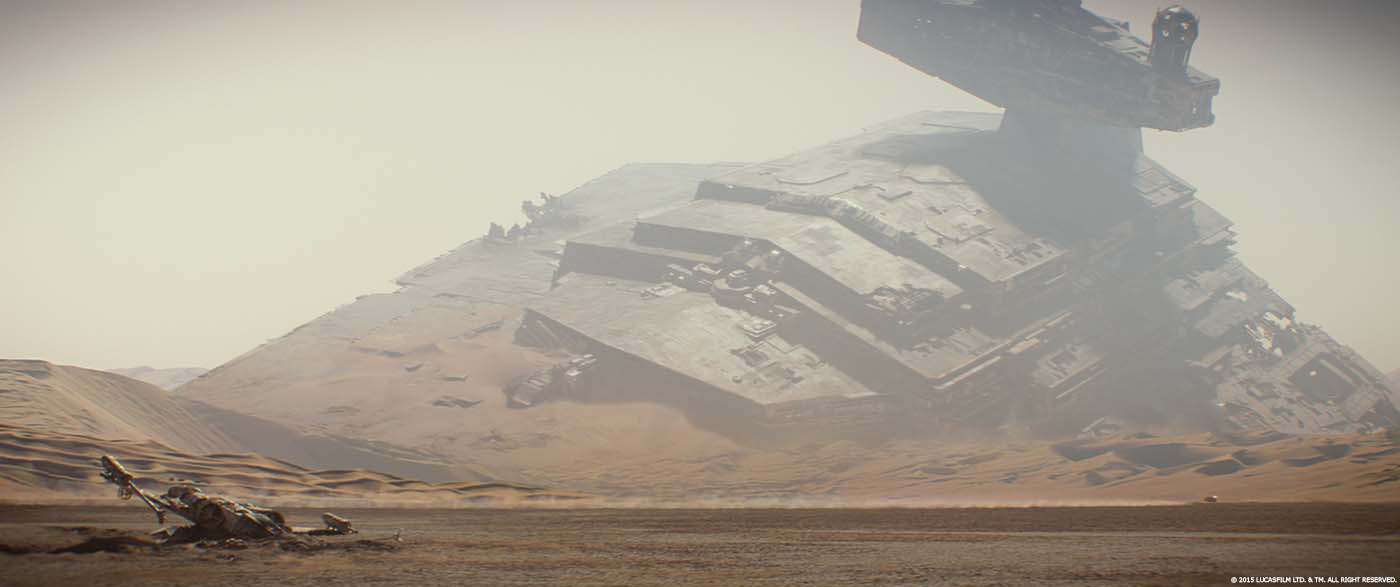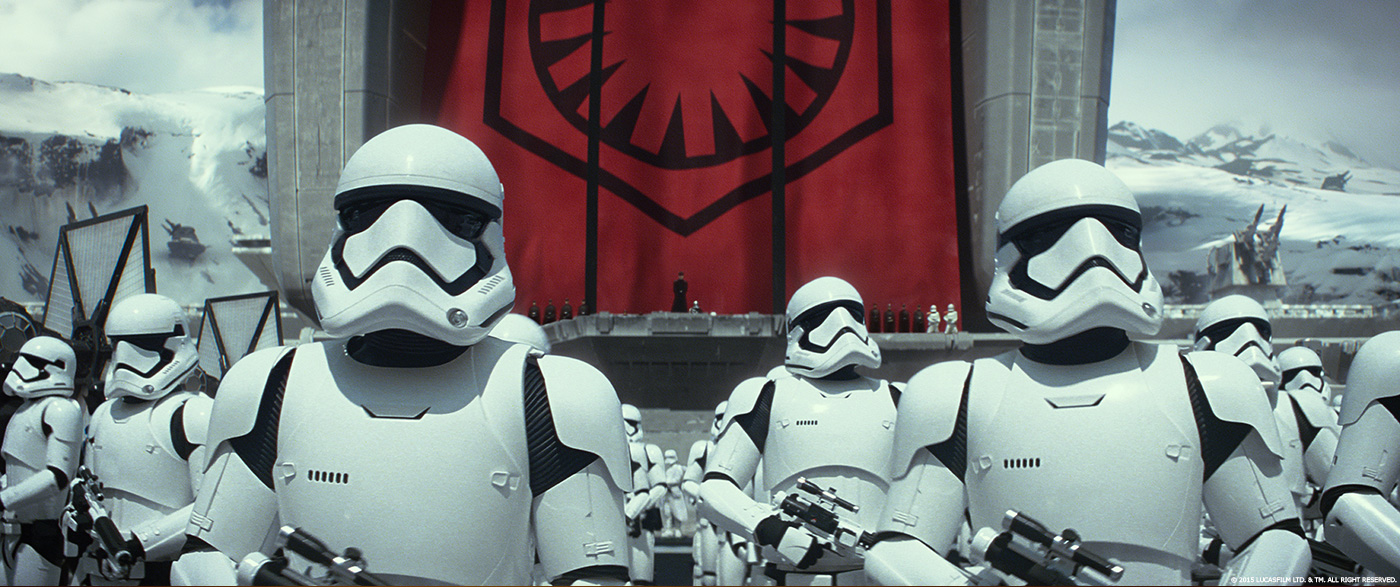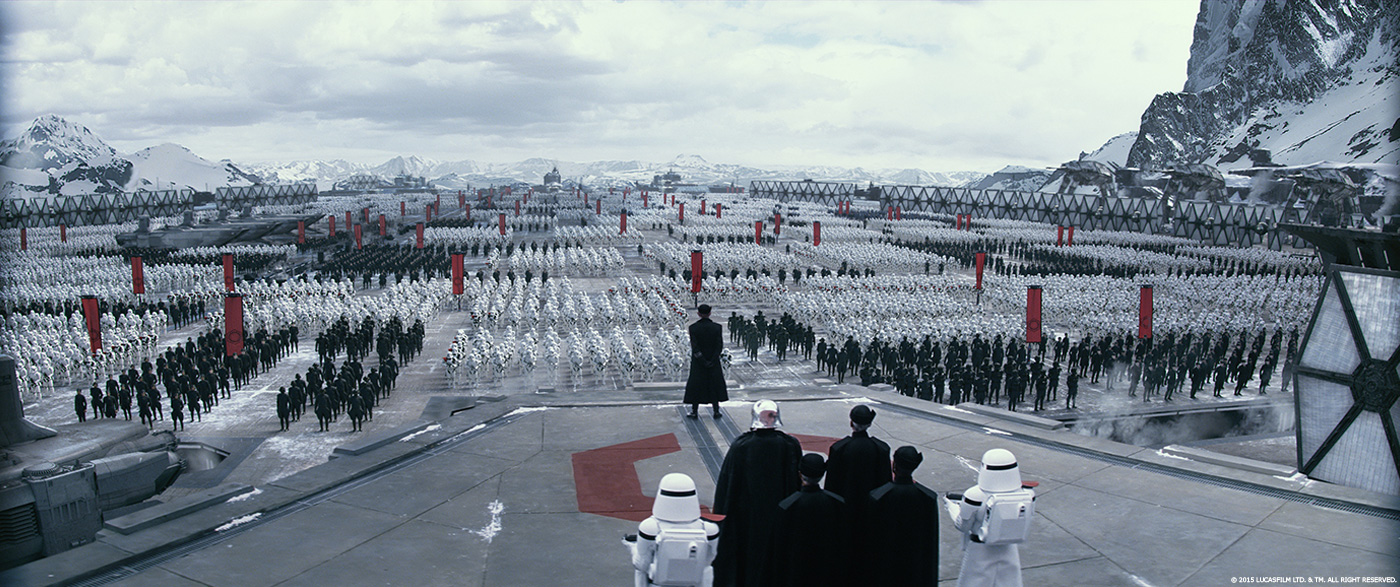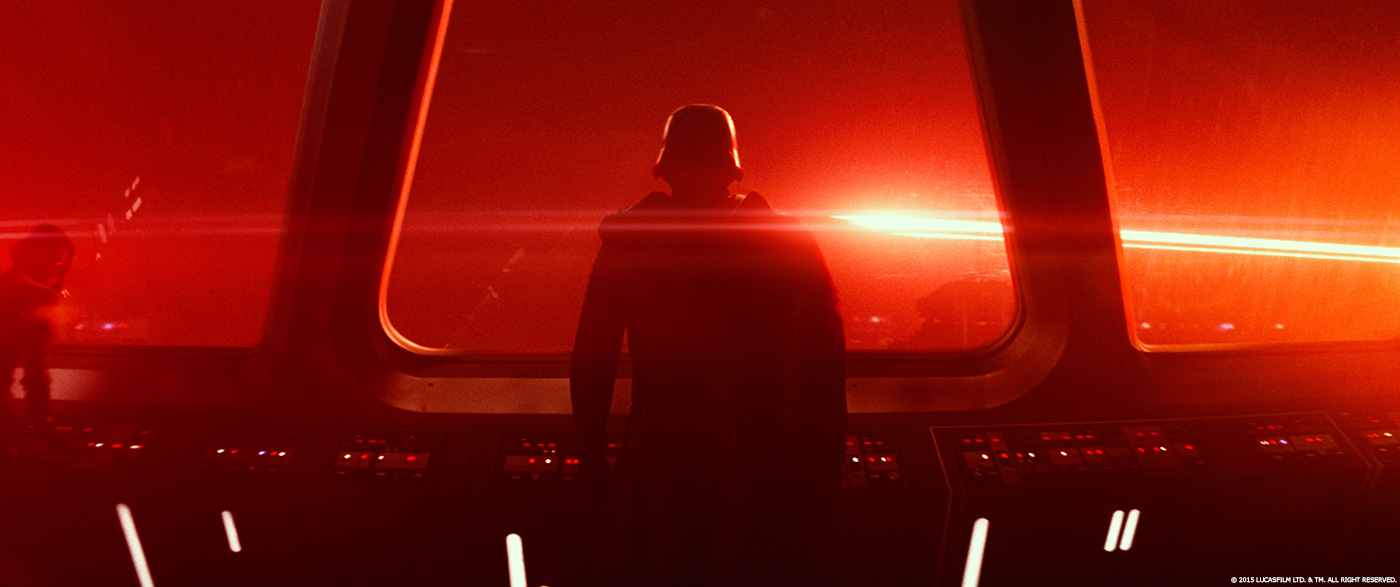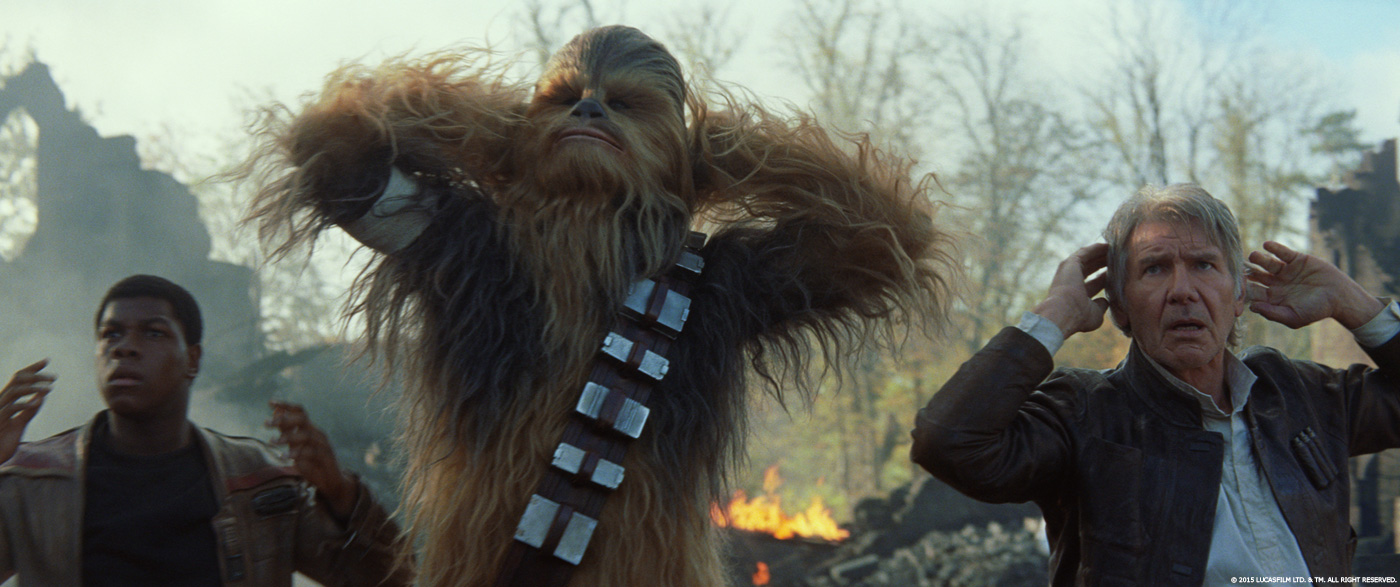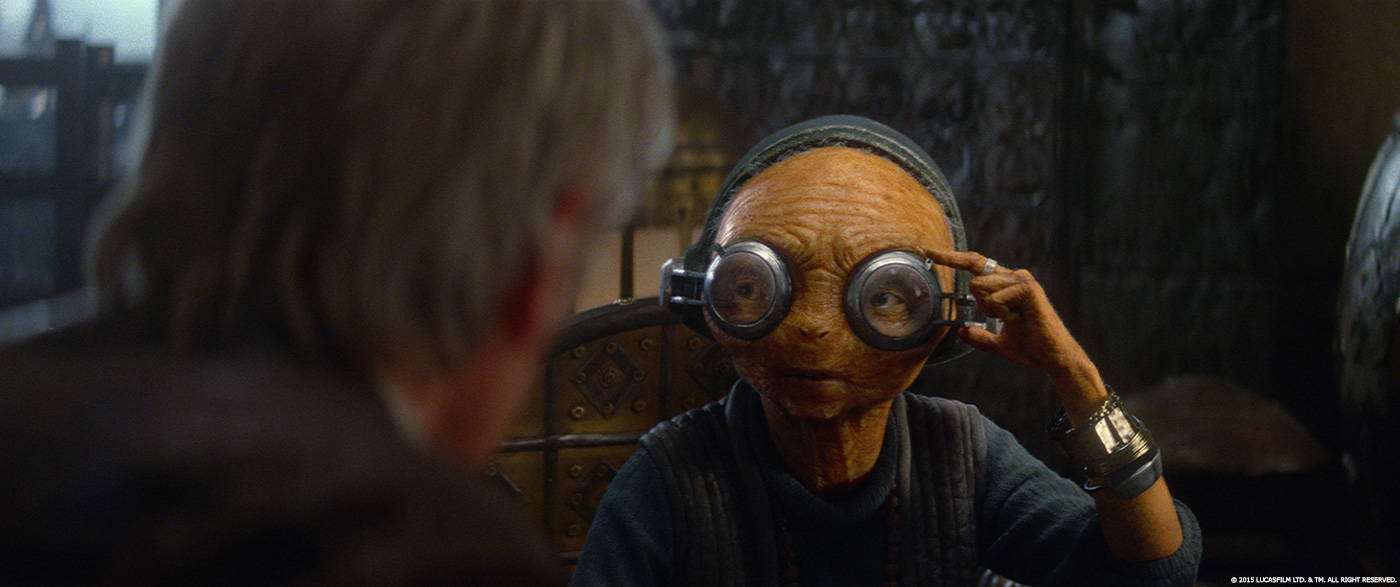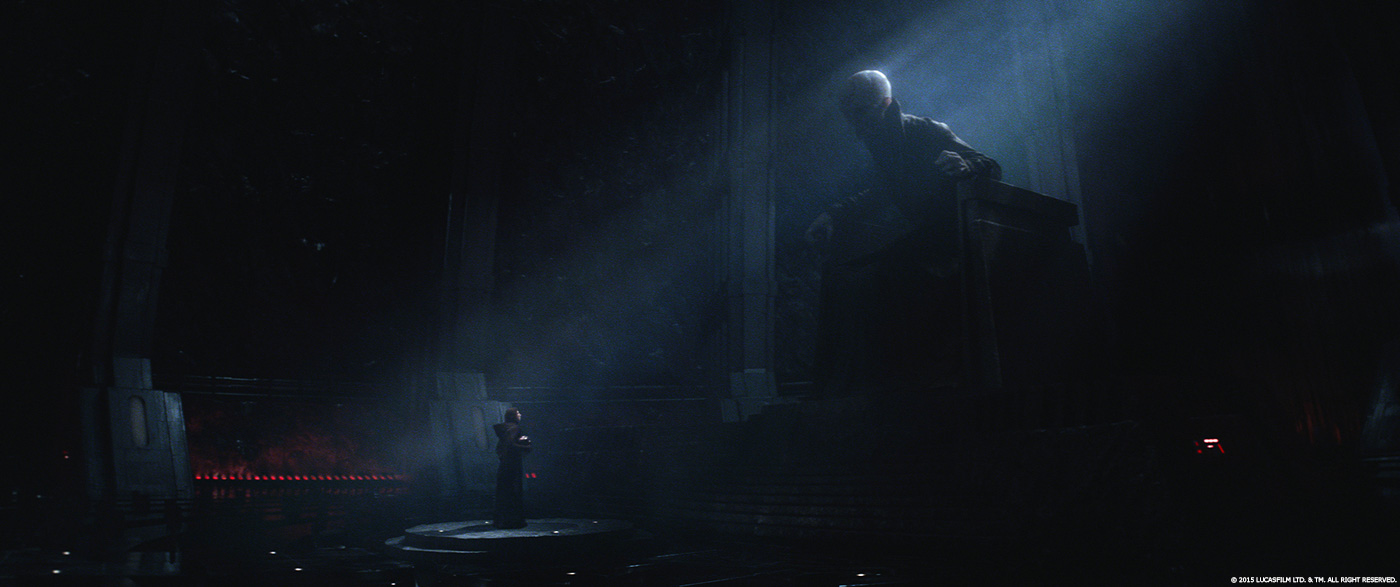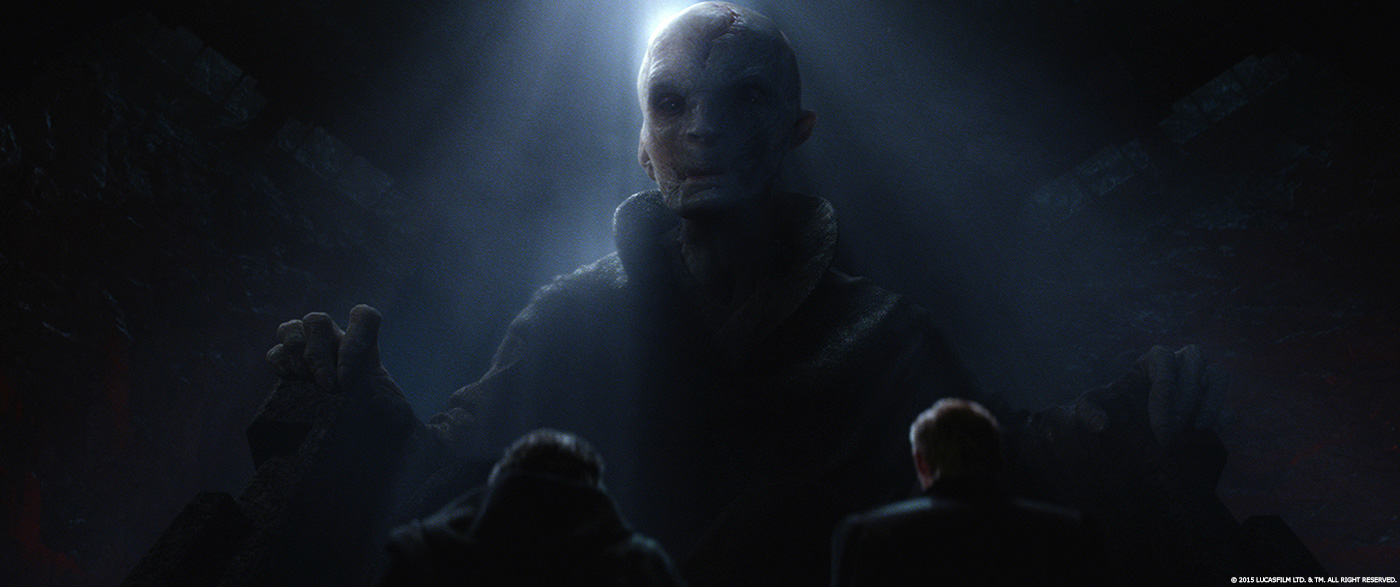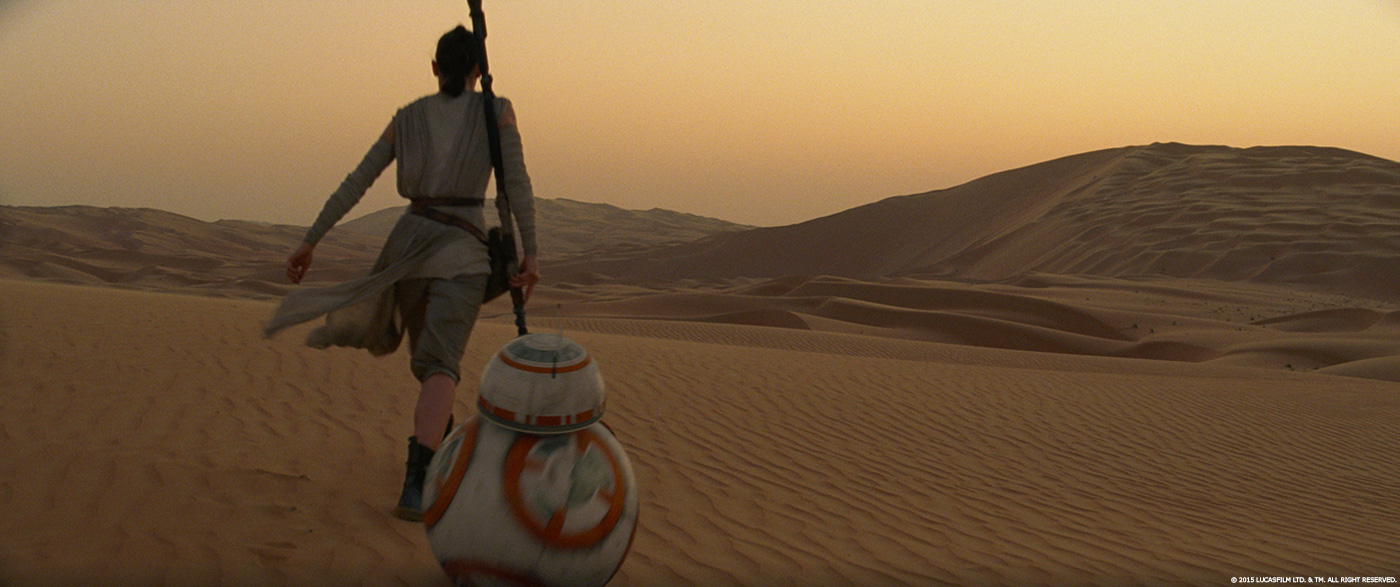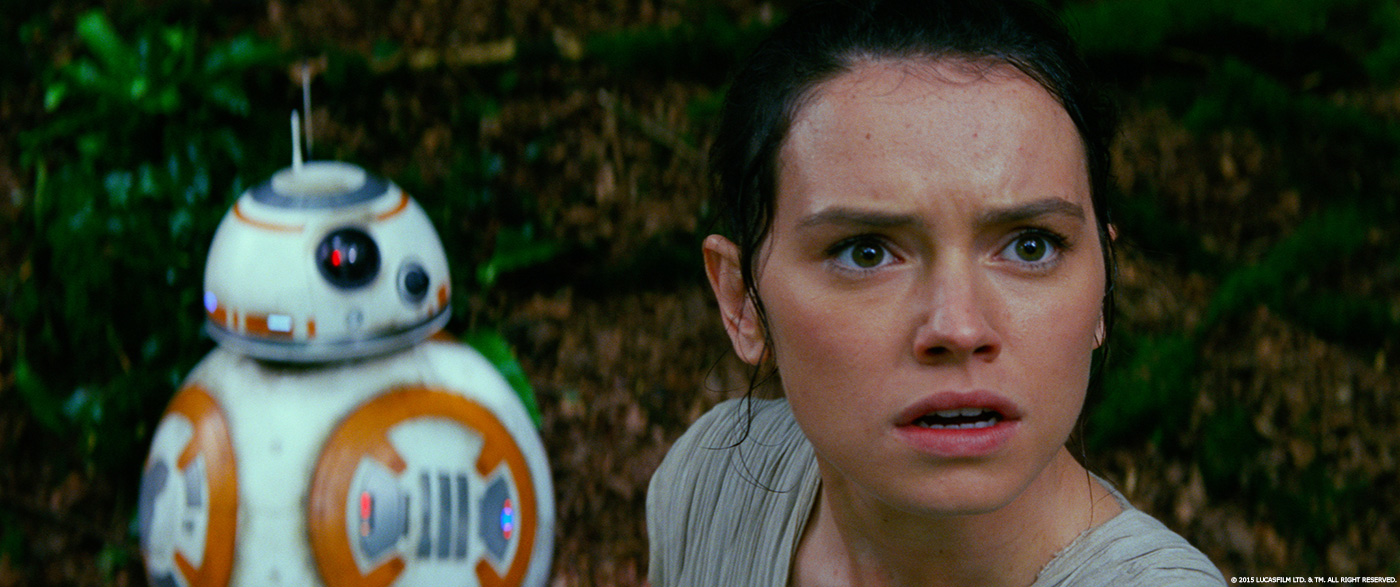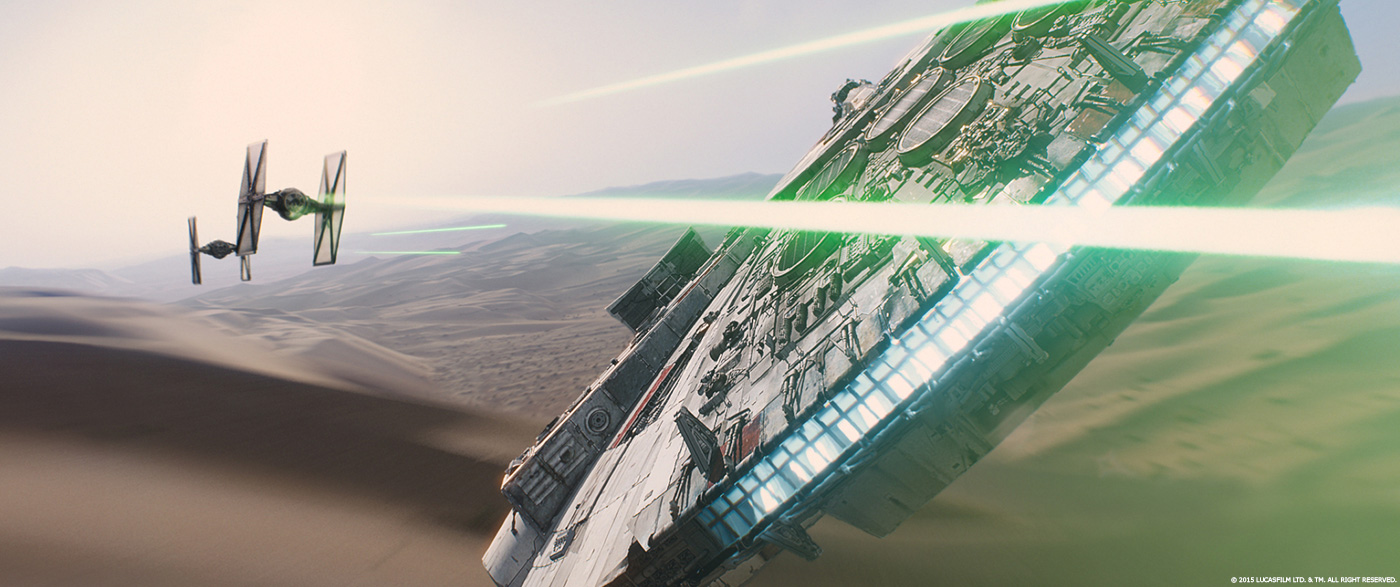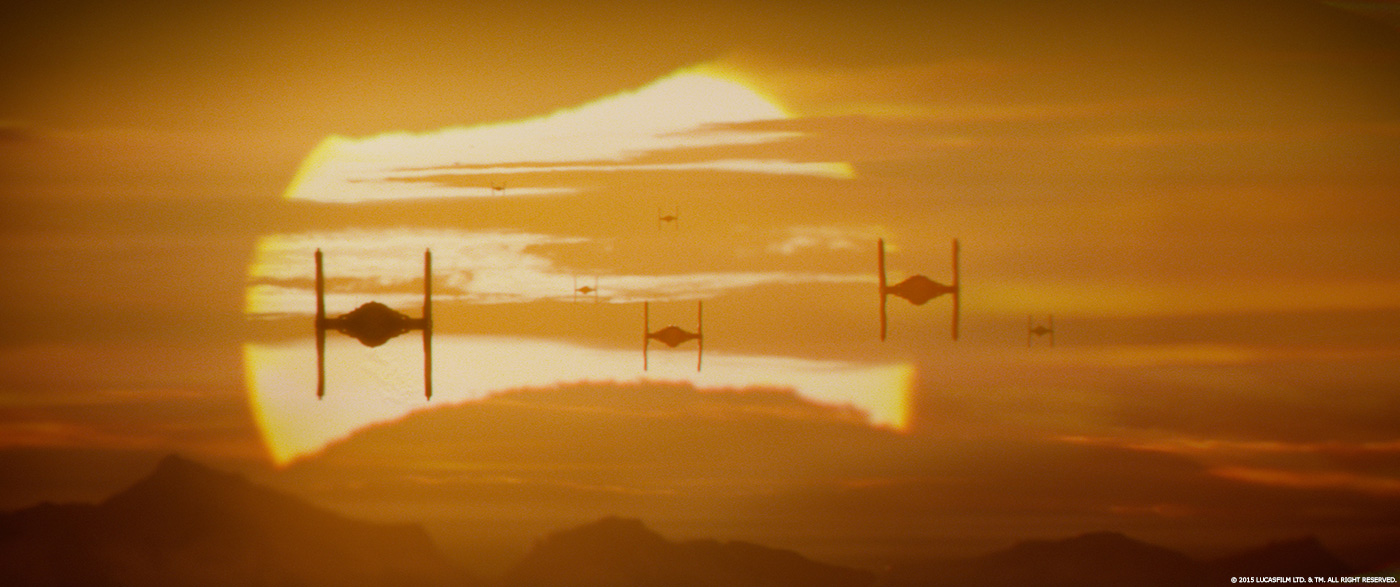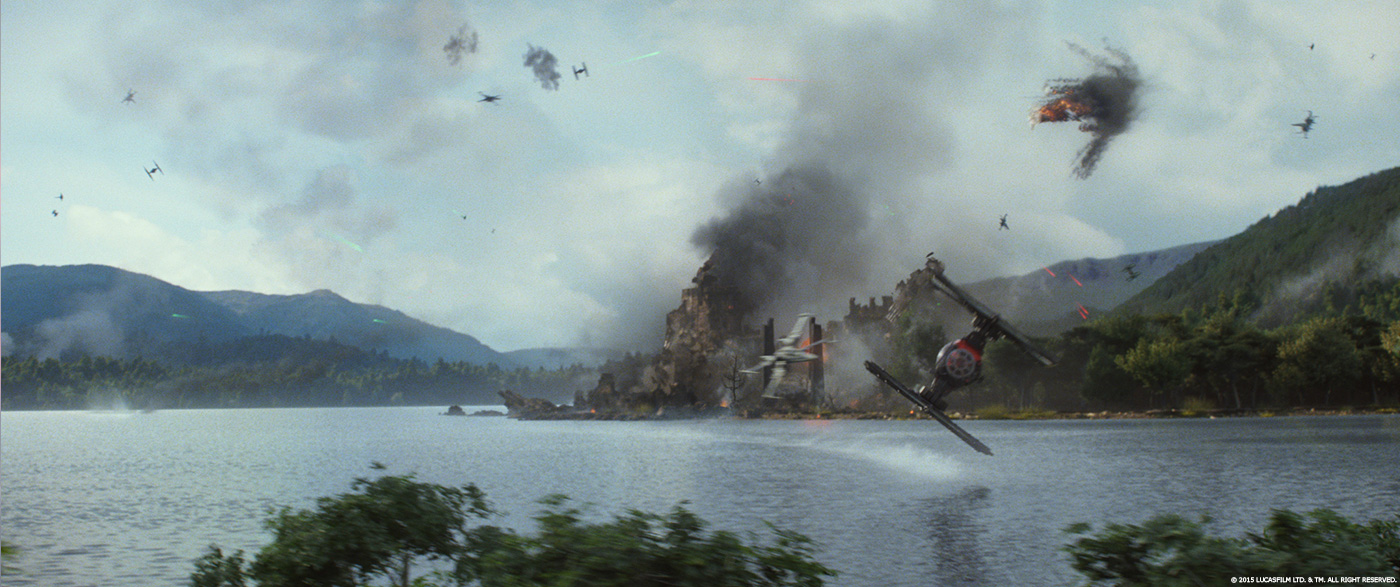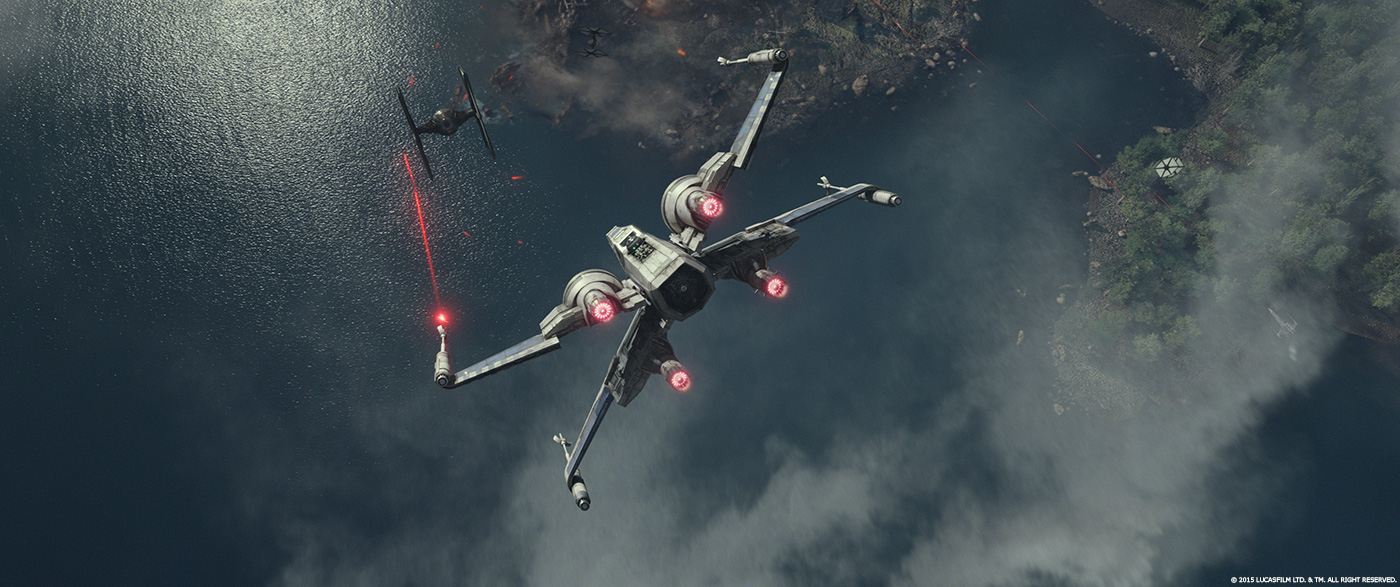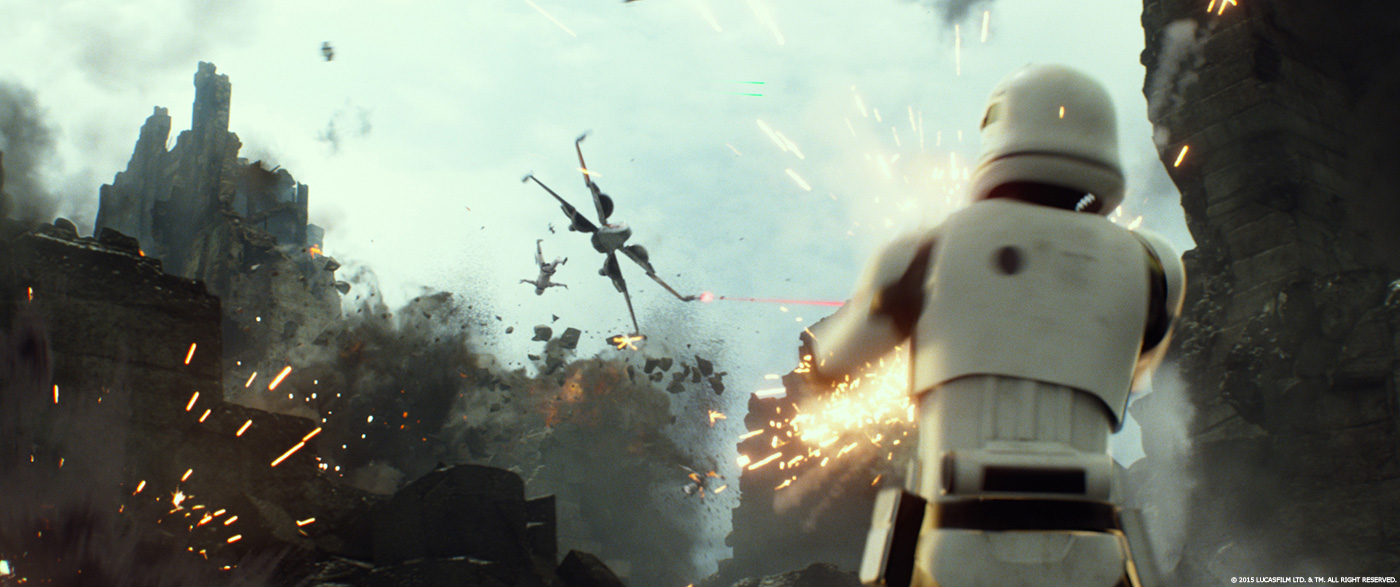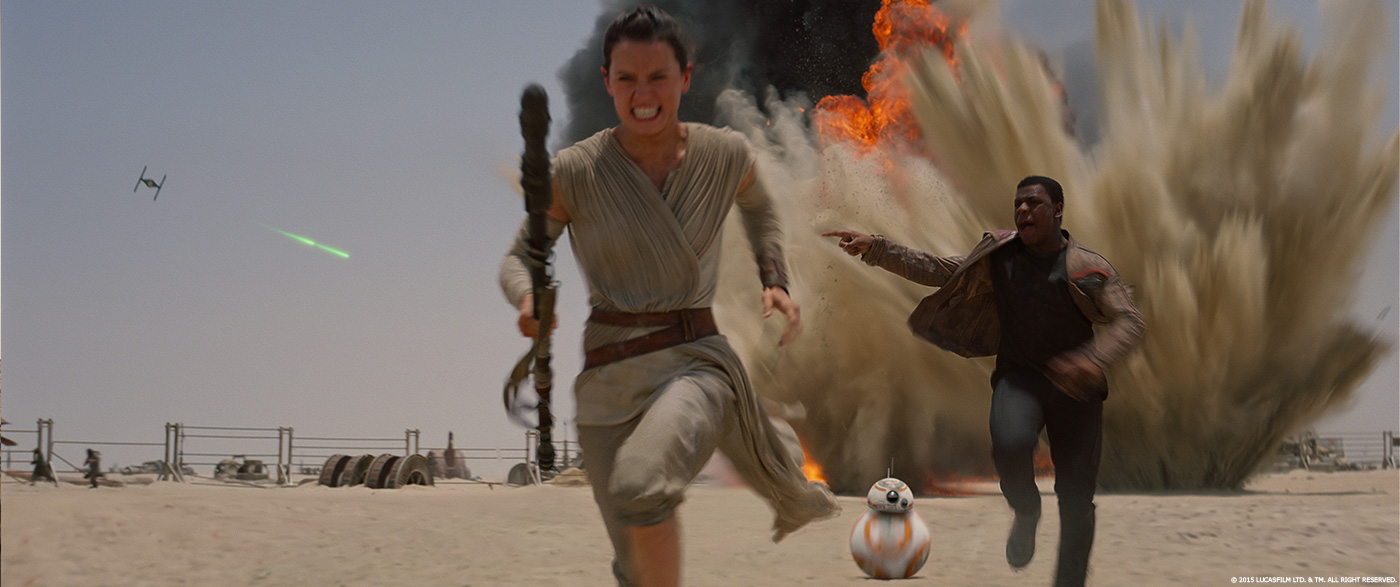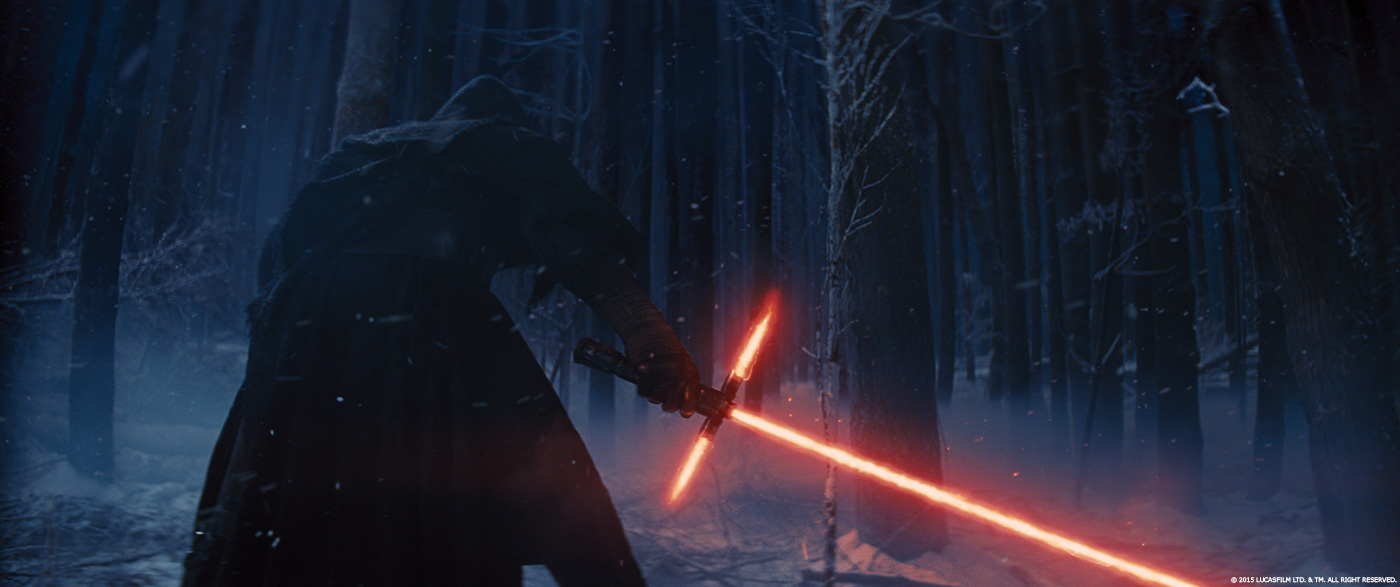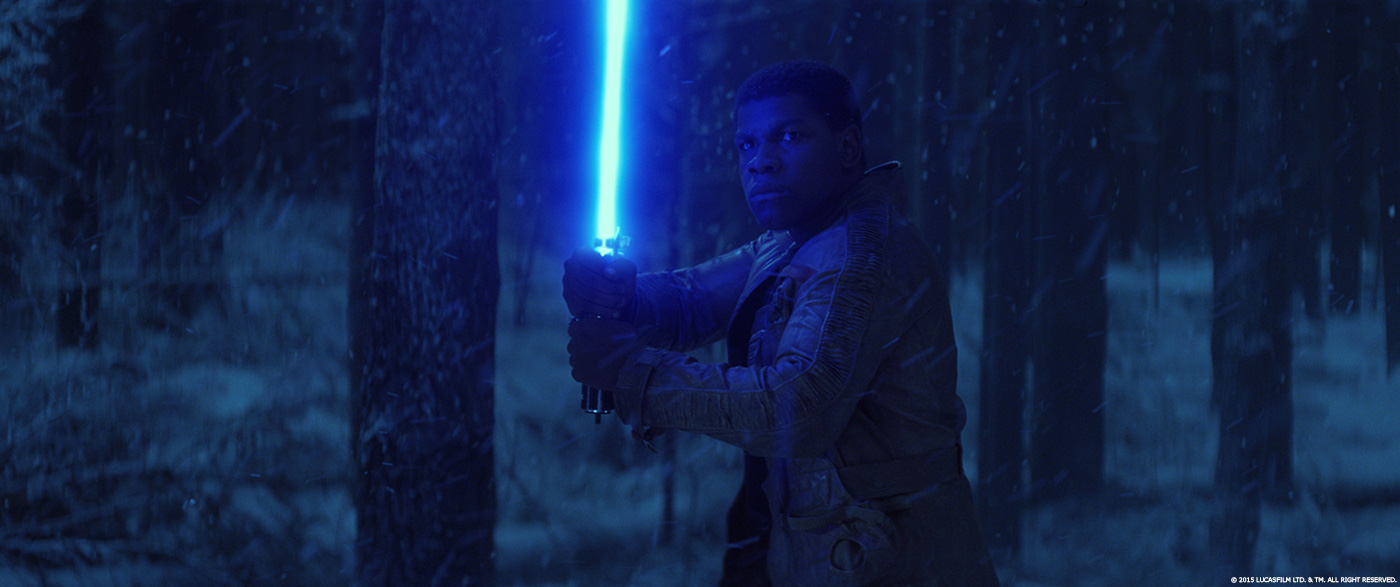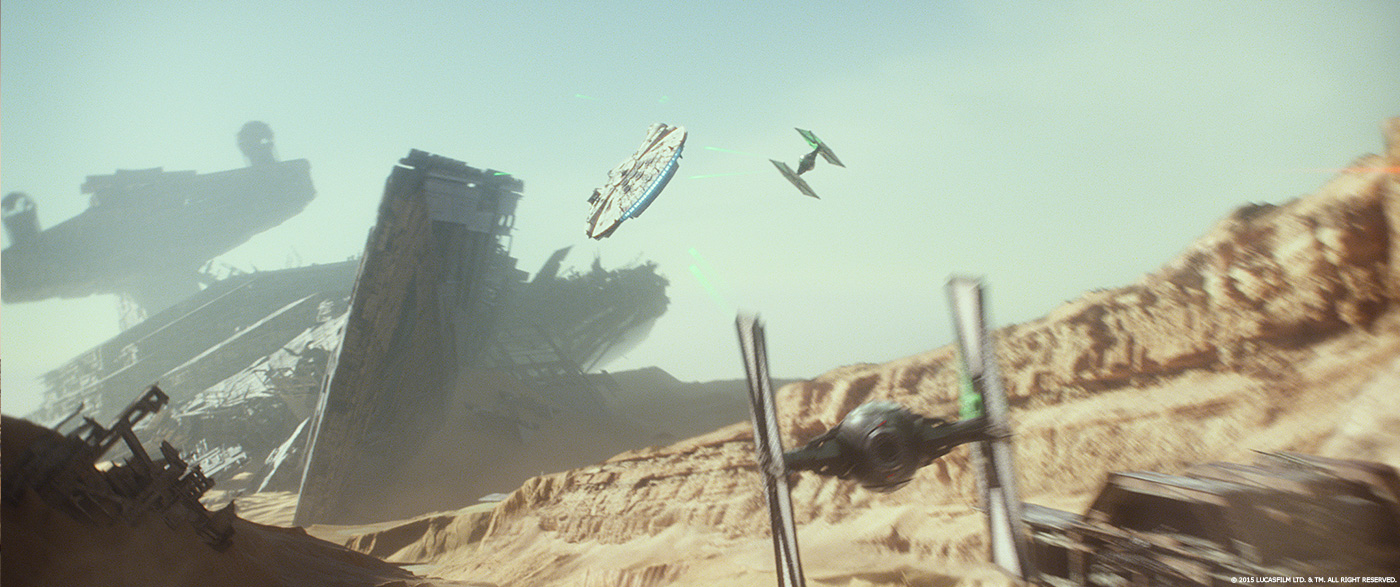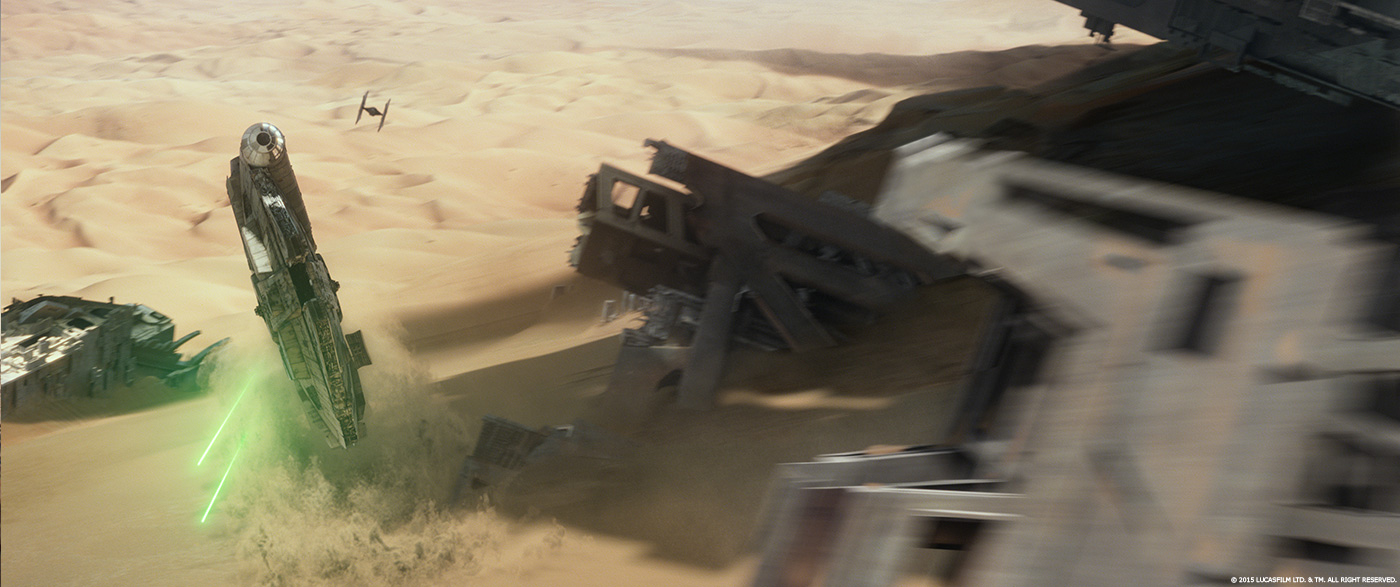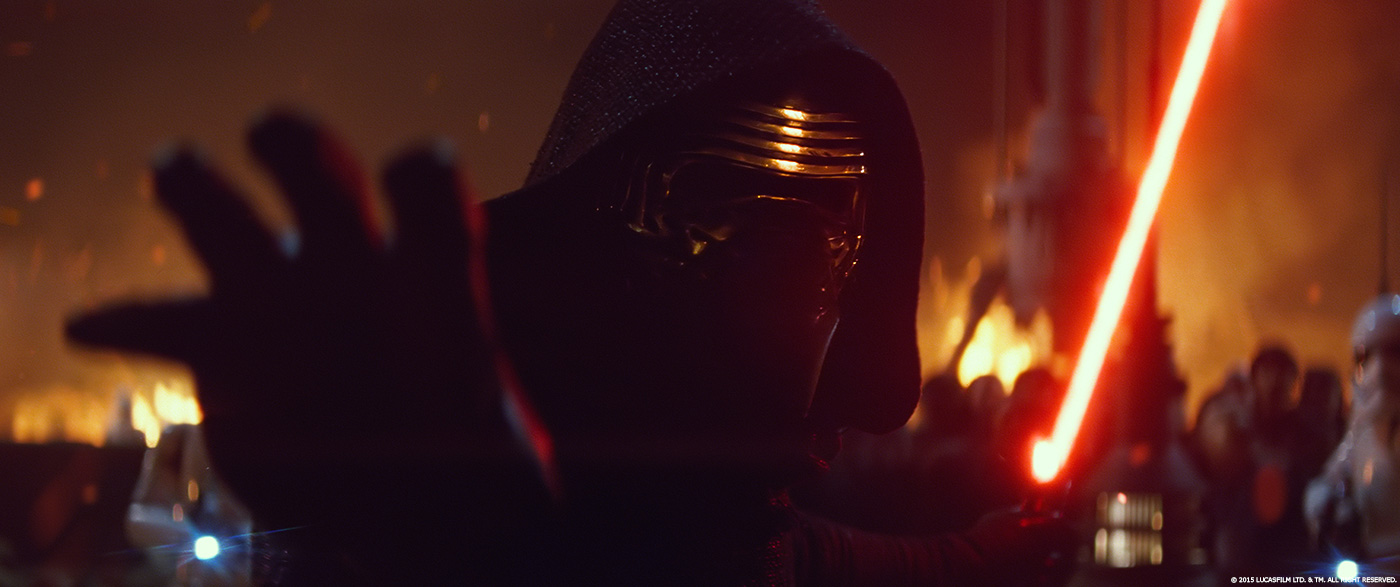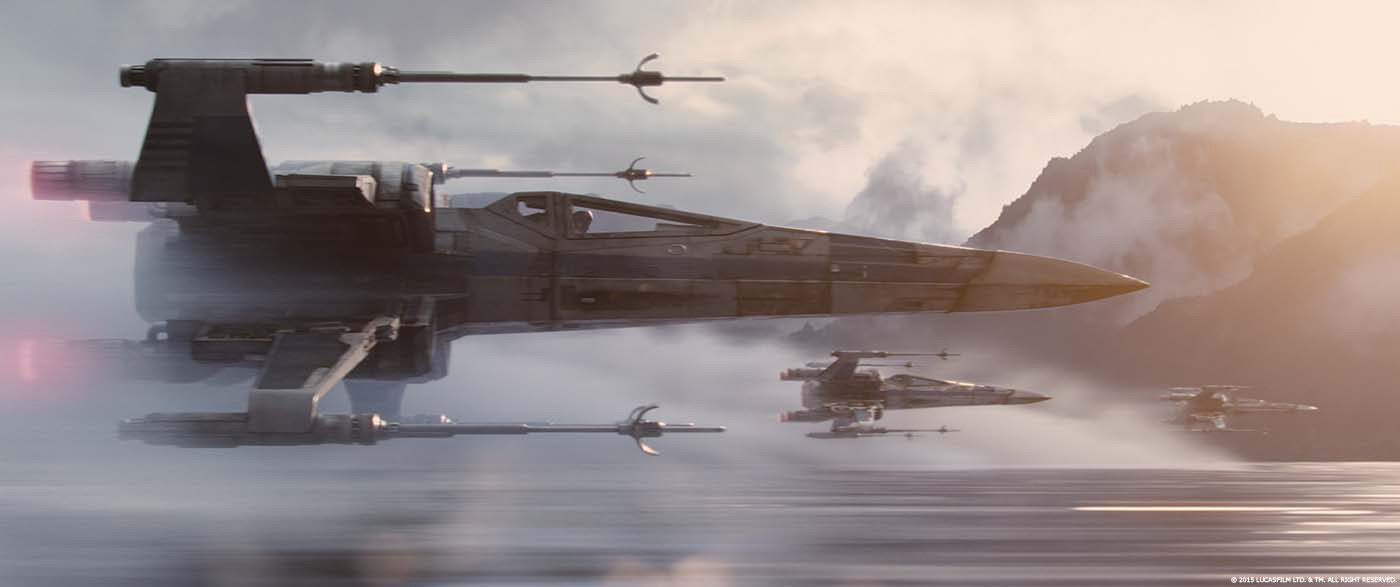In 2013, Roger Guyett had explained to us about the work of Industrial Light & Magic on STAR TREK INTO DARKNESS. Now he talks about his work on STAR WARS THE FORCE AWAKENS which marks his fourth collaboration with director J.J. Abrams.
This show is your fourth collaboration with director J.J. Abrams. Can you tell us more about it?
I really enjoy working with J.J. and have a tremendous respect for him as a director – he’s extremely talented, amazingly creative and is a great collaborator too. We’ve done a lot together and that creates a level of short hand that makes the communication easier. He’s also a lot of fun to work with but he always makes the work interesting and challenging. He has a genuine interest in visual effects work and a real understanding of he can use visual effects to enhance his films.
How was his approach about the visual effects?
We wanted to capture the feeling of the original trilogy and that meant lots of practical creatures and effects and better use of sets and locations. That’s in the DNA of the original films but we also didn’t want to overlook the huge contribution contemporary technology could make. To get the tone right, we tried to create a practical foundation for all the digital visual effects work that would follow. Of course, for a movie like THE FORCE AWAKENS, that’s a lot of work and it ended up being around 2100 visual effects shots – the trick was trying to make it all as integrated as possible – really blurring the line between the practical and digital.
In pre-production J.J. talked about the tactile feeling he got from those original movies – that’s what we were striving for but the innovation, in my opinion, was coming at it from both sides: the best practical work and then combining that with the most up-to-date digital technology. A lot of new technologies were developed for the show – including a completely new simulation engine and a new way of dealing with assets and rendering.
What was your feeling to be back in the Star Wars universe?
Fantastic – if you’re involved with this business, it has an incredible legacy and it’s at the very core of ILM as a company. Obviously we’re all fans too, so we were very excited to be involved. It was a real passion project for my crew and J.J as well.
You are VFX Supervisor and also 2nd Unit Director. What are the benefits about this position?
It pulls me a little closer to the film because I’m going out and getting the shots themselves, so I’m thinking more about the finished shot with a real sense of authorship and the story telling that each shot has to have. A lot of what I do as a second unit director is more biased towards the action part of the movie, and that’s generally connected to the VFX, so I feel I can be more efficient and clearer about what I need to shoot to make it work – especially as I’m going to end up with this material and have to make it work! But it’s a lot of fun and well worth the extra effort to try and wrangle both those responsibilities.
I imagine your days were very long. How did you split them between VFX and directing?
Good question, the days were definitely long. The 2 jobs feel so interconnected on this kind of movie; it’s hard to know where the line is drawn between them. A lot of the decisions about how we’re approaching certain kinds of effects shots and ideas are decided in preproduction – the shoot becomes more about execution of those ideas. Of course, there’s still a lot of visual effects planning all through the shoot – but I’ve been lucky, and we had a great team on the show.
Can you tell us more about your collaboration with the other departments?
For a project of this scale and genre there has to be an incredible level of collaboration – we want the process to be efficient and obviously, collectively make the best movie we can. On this project in particular though, with our goal of being as integrated as possible, and trying to do as much in-camera as possible, there was definitely more planning and collaboration. We worked incredibly close with each of the departments, but especially with the art department, Rick Carter and Darren Gilford, the camera department with DP Dan Mindel, Creatures and Effects, led by Neal Scanlan and Chris Corbould: these are all incredibly talented people! Of course we want to leverage off everyone’s contribution.
The movie feature many creatures. What was your approach about them?
J.J., Neal and I would discuss where we felt practical creatures would work best. Often it’s about the kind of performance or just the reality of what we could achieve on the set. We’re all big fans of practical work so we tried to do as much as possible. When you can use practical creatures, or stand-in actors, it’s great for J.J. because the performances are physically there to react to and direct. Even the digital characters were played on-set by the actors – so that really helped too. In the end, we had a great mix, a lot of real practical creatures and then some key and challenging digital creatures – like Maz, Snoke and the Rathtars. Neal was involved in the design of all the creatures including the digital creatures too. We wanted the digital creatures to blend into the world of the practical creatures and make it feel like one universe. Neal was a great resource when it came to details that would make our digital creatures feel more practically created.
Can you explain in detail about the creation and animation of so many characters?
Each one has its challenge of course and you need to figure out how you’re going to get the best performance out of that character and onto the screen. That drives the technical side of how you create the character. But its all about performance… You want to elicit an emotional response from the audience.
What was the most complicated character to create and why?
On the digital side, they all had their challenges but Maz was probably the hardest. She had a lot of complex acting acting to do – conversations with Rey delivering some very emotional lines. Technically she’s a mix of key-frame and motion capture driven animation. A lot of R&D went into creating her and she has a tremendous amount of detail. The ILM London team – led by VFX Supervisors Mike Mulholland and Ben Morris and Animation Supervisor Mike Eames did such a great job building and bringing Maz to life.
Can you tell us more about the performance capture process?
We have a strong relationship with the team at Disney Research in Zurich which is a great resource for us and of course ILM has a renowned R&D department itself but working together we developed a new variant on the ILM MoCap system for a full-on facial capture process. We used 4 head cameras…and then we also used an IBC (image based capture) system for her body motion. That was so we could allow Lupita (who played Maz) to really get in amongst the other actors – and by using the IBC system, we had a lower footprint on set.
There is a new cute droid, BB-8. Can you tell us more about him and the mix of practical and CG?
From the beginning we knew we wanted BB-8 to be as practical as possible, so that the actors could interact with him, and of course J.J. could direct him on set. The system that Neal developed allowed BB-8 to be controlled by 2 puppeteers. One basically drove the broader motion with 2 mechanical arms whereas the second puppeteer was able to remotely control the head.
Their acting defined his personality – that was the crucial element. We knew we’d end up with a lot of complex paint out of the puppeteers but having the droid “live” was great for the overall performance. We then had a great basis for the performance of our CG version – which ended up being about a third of the shots of BB-8 – mainly the more action orientated shots. Having the real droid as a reference was incredibly helpful. Sometimes we’d even switch between the practical puppet and the CG version in a single shot.
As always, Star Wars take us to beautiful and exotic places. Can you tell us more about these new locations?
Most of the desert material was shot in the United Arab Emirates in an area called the “Empty Quarter”, which is very appropriately named bearing in mind it’s such an in-hospitable environment and then a second location just outside of Abu Dhabi. Those were the 2 desert locations. A lot of the snow/ice material was based around locations in Iceland and the castle material was shot in the U.K., in an area called the Lake District.
Can you explain step by step about the various spaceships creation and especially the Millennium Falcon?
Wow – there’s a lot of them! ILM’s Dave Fogler was the modeling lead on the show and at the start of the project he had a great time going to the archives studying the original miniatures with whole modeling crew. Those guys did such a great job building so many models. All of them are digitally created but referencing the original miniatures really gave them more authenticity. Ultimately, it was a lot fun designing and building all these old and new ships. New T.I.E. Fighters, Star Destroyers, X-wings and a host others. What could be better?
There are many dogfights in the movie. How did you choreograph these sequence?
It took a lot of time and work. ILM’s Paul Kavanagh, our animation supervisor, is really great at putting these shots together, though heavily choreographed, in a way that they feel very organic. He’s done a lot of this kind of work over the years. I also really wanted to make sure it felt real – lots of fixed mount type cameras – but also trying to make it as exciting as possible but keeping it plausible – something you could go out and shoot if you had real X-wings and T.I.E. Fighters that is.
Did you use procedural tools for the various events (laser, explosions, …) in these fights?
The light sabers were fully procedural 3D assets. We’d also develop specific events that we could use more procedurally with variations. For example, the desert explosion hits from the T.I.E. Fighters…that kind of thing. Or even any kind of firing – for example the X-wings, Storm Trooper blasters and T.I.E. Fighter laser fire were all based around procedural systems.
Let’s talk about the mythical Lightsabers. How did you enhance them since the previous movies?
The really fundamental change was that the stand-in sabers that each actor fought with were actually controllable light sources, LED lights inside a plastic tube. Having real interactive light made an incredible difference to our finished work. We developed a system that created the finished digital light sabers – they were fully dimensional elements too. That’s a first for that – in previous movies the light sabers were based around 2D elements, here we went full 3D.
How did you split the work amongst the different ILM offices?
We try to divide it based on the available talent at each studio and by dividing the work by sequence – common sense really.
These various offices are based all around the world. How did you follow their work progress?
That’s the nature of the business these days – work is being done all over the world. Fortunately, we have an incredible production team in each studio and an array of tools to make a lot of the mechanics invisible to the crew and the process of reviewing work much easier, regardless of its origin. Of course, myself and the other supervisors spend a lot of our time reviewing work – and having teams working in different time zones means that we’re in a lot of reviews throughout the day. We try to connect directly with each team using a version of video conferencing. Having great supes on the show like Patrick Tubach, Paul Kavanagh, Mike Mulholland, Dave Dally, etc. make the job so much easier.
What was the main challenge on this show?
I was really driving to create an experience for the audience that keyed off that tangible quality that J.J. mentioned about the early films… Trying to blend the practical with the digital work in a way that was as seamless as we could achieve….as I said before, blurring the line between the real and imaginary. That was my main goal and when you consider the scale of the project our biggest challenge.
It was a huge undertaking and I didn’t want to resort to creating just an homage or retro film, but something that had its own energy and personality. This movie had to be about story (the biggest factor) but also feel both exciting and innovative.
How long have you worked on this film?
I worked on it for around 2 ½ years.
How many shots have you done?
There are about 2100 finished VFX shots in the movie.
What was the size of your team?
It goes well beyond a thousand people….all 4 offices of ILM (San Francisco, London, Singapore, and Vancouver), and our partner companies like Base FX and Hybride, and then everyone on the Kelvin Optical team in Los Angeles…let alone the shooting crew and mocap team….it’s a lot of people! And I shouldn’t forget Tippett Studio.
What is your next project?
I’m trying to take a break at the moment but I’m sure another exciting project is on the way.
A big thanks for your time.
// WANT TO KNOW MORE?
– Industrial Light & Magic: Dedicated page about Star Wars The Force Awakens on ILM website.
© Vincent Frei – The Art of VFX – 2016



